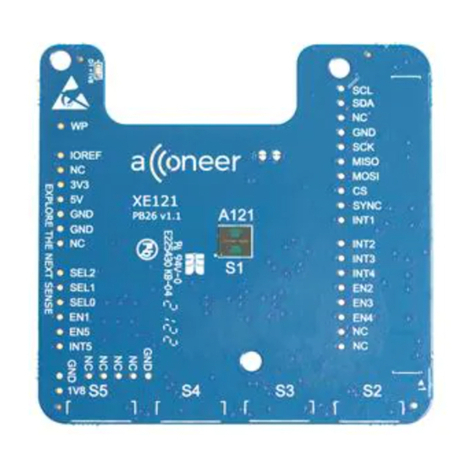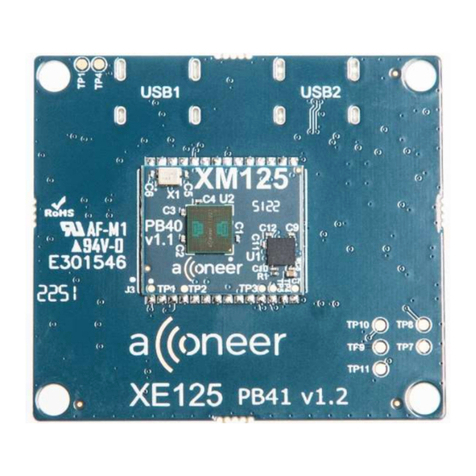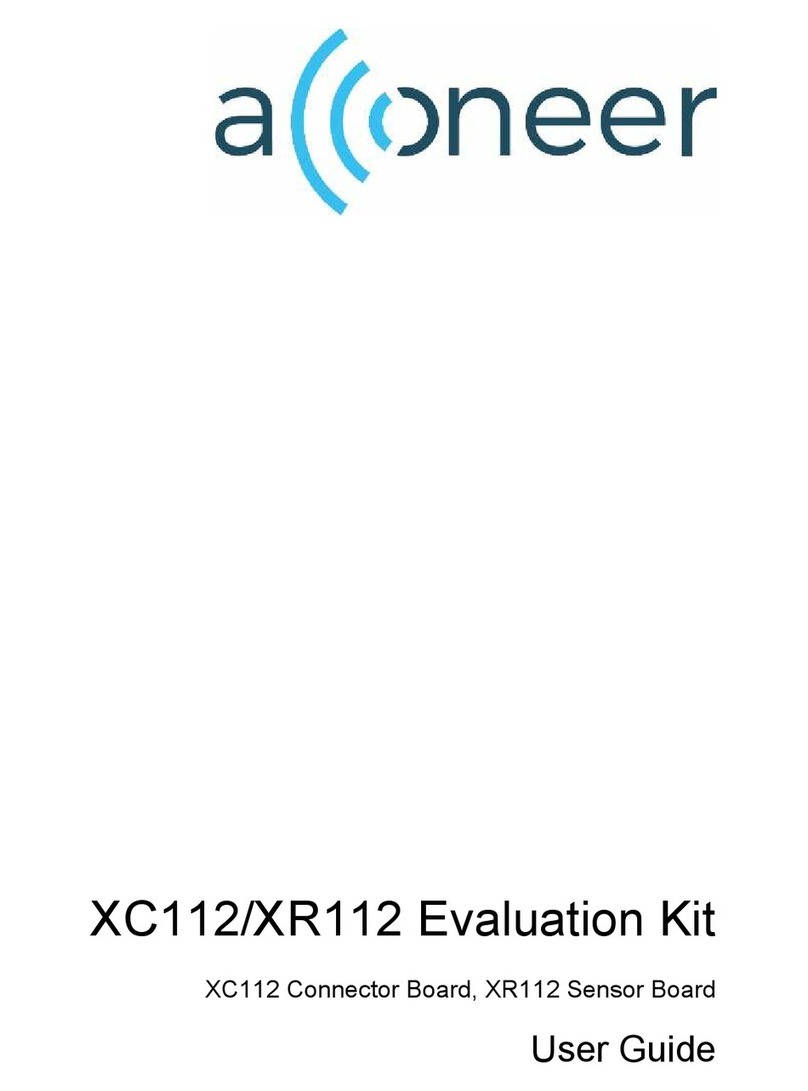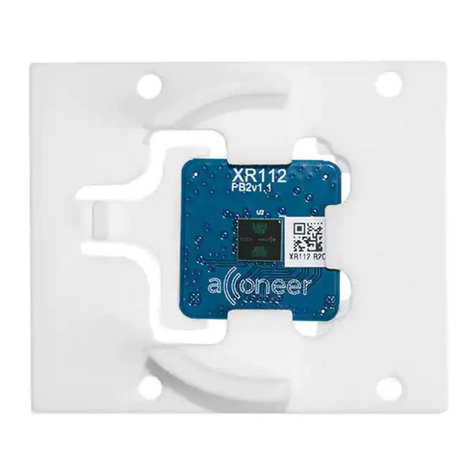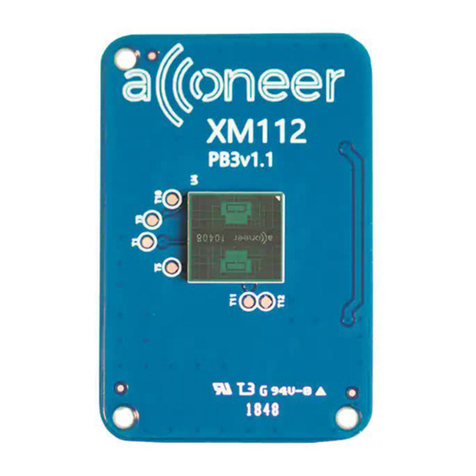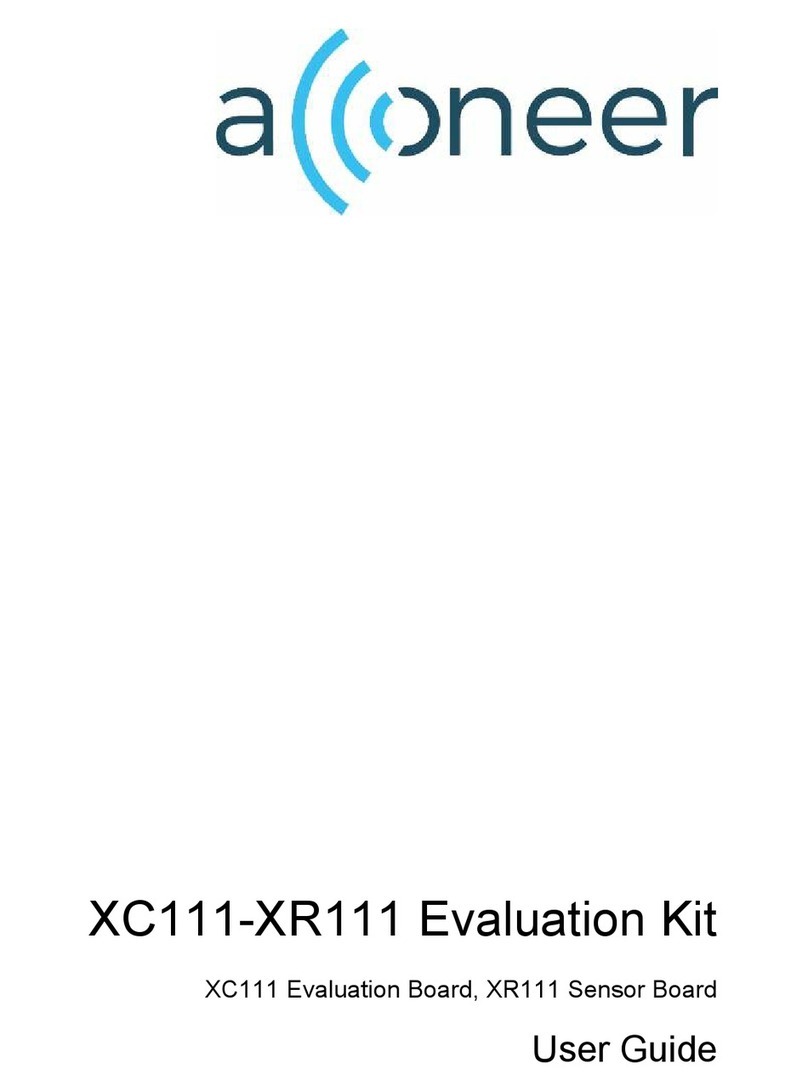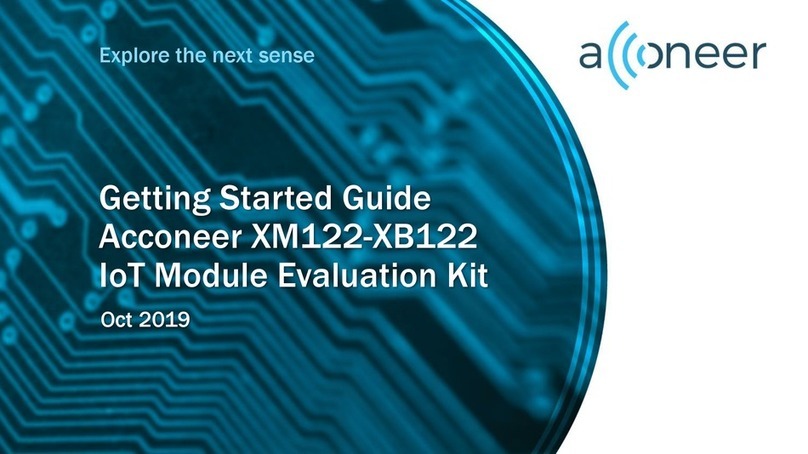
IoT module EVK hardware user guide
Page 3 of 37
2020-06-12 © 2019 by Acconeer – All rights reserved
Table of Contents
1. Overview of the XM122/XB122/XA122 IoT Module Evaluation Kit ............................................ 5
1.1. Introduction ............................................................................................................................. 5
1.2. Getting Started ......................................................................................................................... 6
2. Software for the EVK ...................................................................................................................... 7
2.1. SW download .......................................................................................................................... 7
2.2. SW API Description ................................................................................................................ 7
3. The EVK Hardware ......................................................................................................................... 8
3.1. XB122 Breakout Board ........................................................................................................... 9
3.1.1. Overview ......................................................................................................................... 9
3.1.2. Power ............................................................................................................................. 10
3.1.3. Electrical Schematics..................................................................................................... 11
3.1.4. Bill of Material .............................................................................................................. 14
3.1.5. Component Placement Drawing .................................................................................... 15
3.1.6. Connectors ..................................................................................................................... 16
3.2. XM122 IoT Module .............................................................................................................. 19
3.2.1. Overview ....................................................................................................................... 19
3.2.2. Electrical Schematics..................................................................................................... 20
3.2.3. Bill of Material .............................................................................................................. 24
3.2.4. Component Placement Drawing .................................................................................... 26
3.2.5. Pinning ........................................................................................................................... 27
3.2.6. Using the IoT module without the breakout board ........................................................ 28
3.3. XA122 Battery Board ............................................................................................................ 29
3.3.1. Overview ....................................................................................................................... 29
3.3.2. Electrical Schematics..................................................................................................... 30
3.3.3. Bill of Material .............................................................................................................. 31
3.3.4. Component Placement Drawing .................................................................................... 31
3.3.5. Connectors ..................................................................................................................... 32
3.4. Connectors ............................................................................................................................. 32
3.5. Test Points ............................................................................................................................. 33
4. Safety ............................................................................................................................................. 34
4.1. Electrostatic precautions ........................................................................................................ 34
5. Regulatory Information ................................................................................................................. 35
6. Revision History ............................................................................................................................ 36
7. Disclaimer ..................................................................................................................................... 37
